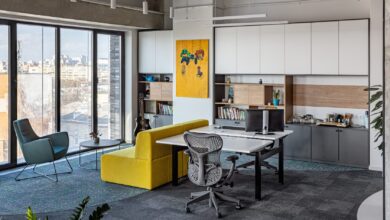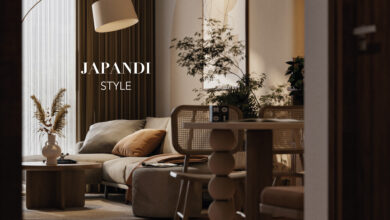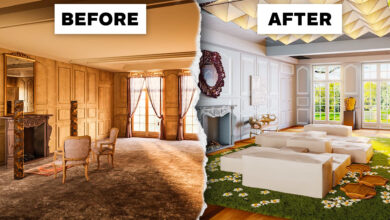Biophilic Design Elements: Bringing Nature into Modern Life

Over the past decade, biophilic design has graduated from being a trend—it has evolved into a philosophy of living, working, and existing harmoniously with nature. From the innate human need to be at one with nature, biophilic design elements are revolutionizing contemporary architecture and interior environments into healing spaces for the body and the soul.
The Essence of Biophilic Design
At its essence, biophilic design is about connecting natural elements to built spaces. It’s not a matter of decoration, but of developing spaces that induce peace, enhance health, and foster efficiency. From sunlight to natural materials, all aspects have their part in making us more connected to nature.
Key Biophilic Design Elements
-
Natural Light and Ventilation
Primarily, daylight utilization through expansive windows, skylights, or open floor plans boosts mood and reduces reliance on artificial lighting. Further, natural ventilation supplies healthier, cleaner air flows indoors.
-
Greenery and Living Walls
Greenery is possibly the most obvious component of biophilic design. Green walls, vertical gardens, or indoor plants – plants cleanse the air alongside offering a soothing visual presence.
-
Organic Materials
Wood, bamboo, stone, and natural fabrics are increasingly being utilized to produce a sense of warmth and authenticity within interior spaces. Therefore, they provide haptic comfort with fewer sterilized conditions than artificial material.
-
Water Features
Moreover, incorporating fountains, aquariums, or reflecting pools adds a touch of tranquility. The soothing sound of water can assist in unstopping tension and creating a sense of relaxation in home and office settings.
-
Natural Shapes and Patterns
Curves, fractals, and biomorphic shapes mirror nature’s randomness. As opposed to hard geometry, they appeal to our natural preference for organic form.

The Benefits of Biophilic Design
Incorporating biophilic design features does more than add beauty. For instance, studies prove that offices incorporating natural elements can increase creativity and focus. Homeowners in homes that incorporate biophilic design tend to induce relaxation and better quality sleep. Biophilic design ultimately creates ownership and balance.
Biophilic Design in Modern Environments
Biophilic design is being used more and more in various types of environments—from green offices, high-end resorts, to even apartments in the city. The more urbanized individuals become and cities become more congested, the more the requirement to reconnect with nature. Designers and architects are therefore creating new ways to bring biophilic elements in so unobtrusively into spaces nowadays.
Conclusion
In short, biophilic design elements are not styling choices; they are part of healthier, more sustainable ways of living. By adding natural light, vegetation, organic materials, and water features to our environments, we create interiors at once a showpiece of current sophistication as well as enduring human imperatives.



